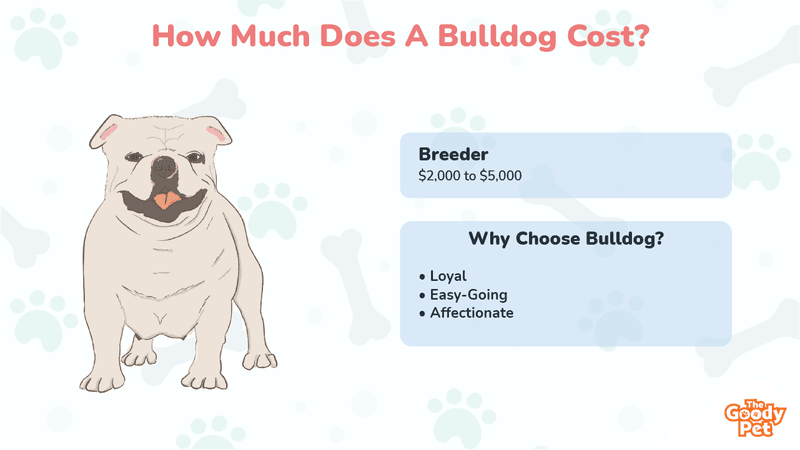The English Bulldog is, unarguably, one of the most popular dog breeds in the world. But regardless of its popularity, the cost of acquiring a Bulldog can be considerably high.
Bulldogs cost around $2,000 to $5,000. They are infamous for health issues related to the stomach and brachycephalia, but these made them popular for farting, snoring and drooling. People find that cute and would pay a high price to own a Bulldog. They are also susceptible to skin allergies too, so do set aside about $100 a month on vet bills and pet insurance. As a short haired lazy dog breed, they do not need much food or grooming, so monthly maintenance cost is around $60.
Additionally, we’ll attempt to examine the health issues commonly associated with a British Bulldog, as well as pooch temperament and maintenance tips that can serve as a guide, if you decide to buy a British Bulldog. But before we go into all that, let’s take a look at how much it’ll typically cost you to acquire a Bulldog in the first place.
What Is The Average Price Of A Bulldog?
The price of an English Bulldog varies considerably, mostly with the location you’re buying the dog. But in most places, you will most likely have to pay between $1,500 to $4,000 to purchase a regular Bulldog.
Factors That Affect The Price Of A Bulldog
Apart from the difference in location, the huge variation in the prices of Bulldogs is down to several factors, some of which we’ll attempt to explain below:
Age
It typically costs more to take care of younger Bulldogs, and this is reflected in the fact that they cost significantly more than their older relatives.
Coat Color
Perhaps the most common factor responsible for the huge variation in Bulldog pricing is the color of the pooch’s coat. English Bulldogs with rare coat colors are in high demand, and they typically cost way more than pooches with the regular coat coloring.
Breeder
Bulldogs from reputable breeders typically cost more, but you can be rest assured that you’ll be getting a pooch that has passed all the required health screenings. It’ll cost less to purchase Bulldogs from puppy mills, but you can be sure you’ll be getting a pooch with a myriad of health issues.
Breeding Process
Most English Bulldogs have to be birthed via a Caesarean section, no thanks to this dog’s unique head shape and body structure that makes natural birth difficult. And a breeder will typically include the cost of this birthing procedure in the Bulldog’s price tag.
Are English Bulldogs Expensive To Maintain?
Apart from the initial amount required to purchase this pooch, the English Bulldog is also quite expensive to maintain. And you should be prepared to part with a considerable sum over the years to cater for this pooch’s feeding, grooming, training and medical expenses.
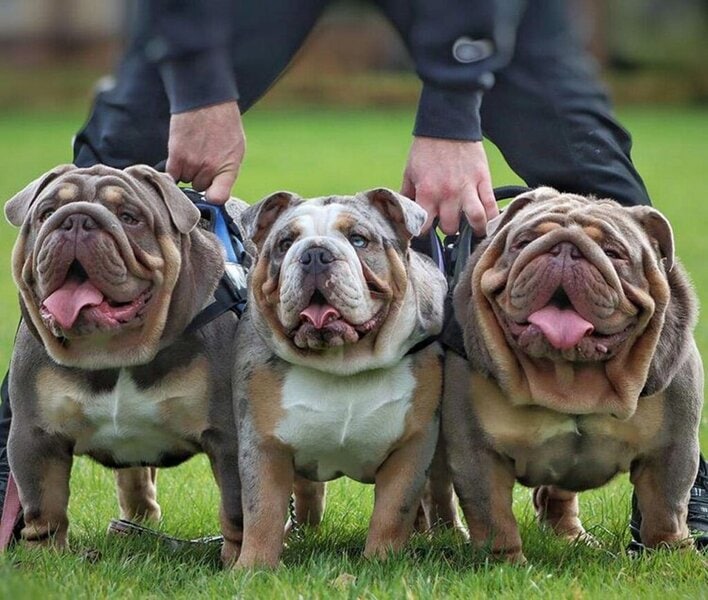
What Color English Bulldog Is Most Expensive?
English Bulldogs are available in a variety of colors, and the most expensive pooches are those that come in rare and highly sought after colors.
Some of the rare English Bulldog colors, and by extension, the most expensive Bulldog colors include:
Merle
Based on available information, Merle Bulldogs are the most expensive Bulldog variation available, and prices for this adorable looking pooch typically range between $8,500 to $12,000!
Bulldogs with a Merle colored coat typically have mottled patches of colors on a solid or piebald coat, and which is complimented by beautiful blue or odd-colored eyes.
English Bulldogs with a Merle coat typically come in chocolate merle tri, blue merle tri, lilac merle tri or black merle tri. In most cases, the Merle Bulldog’s undercoat is blue with the topcoat usually being a darker shade.
Lilac Tri
Bulldogs with Lilac Tri coats are extremely rare and difficult to breed. And this is why the average price of this pooch usually falls between $7,000 to $9,000!
The Lilac Tri-colored English Bulldog typically has a chocolate base coat that turns champagne over time due to the dog’s genes. And tan points on the legs, chest and face further serve to complement this pooch’s show stopping looks.
Chocolate Tri
The average price for the Chocolate Tri English Bulldog ranges from between $6,500 to $7,500, and with one look at this pooch, it isn’t hard to see why.
Bulldogs with this coloring typically boast dark brown and white coats with tan points on the face and legs, and hazel or green eyes.
Other rare and relatively expensive English Bulldog colors along with their average pricing include:
- Chocolate or Blue Brindle – $3,500 to $4,000
- Blue Sable – $4,500 to $5,000
- Blue Tri – $5,500 to $6,500
- Lilac Sable – $5,000 to $6,000
- Black Tri – $4,000 to $5,000
Now that we’ve successfully dissected what the average cost of a Bulldog is, let’s see if this is one dog breed worth getting and these dog’s maintenance requirements.
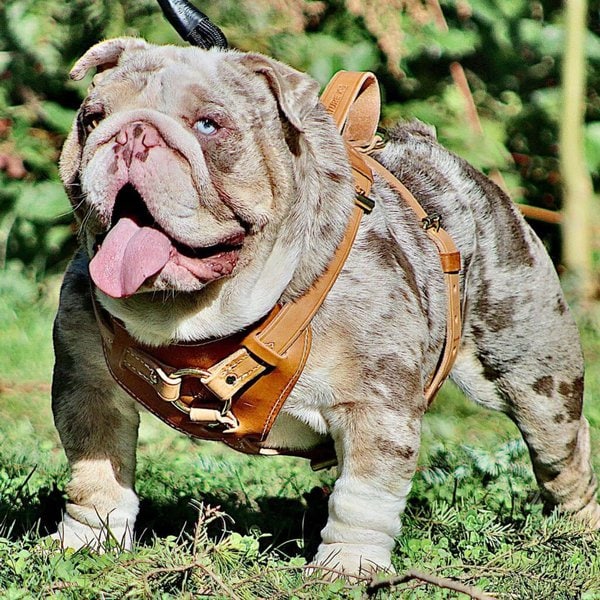
Do All Bulldogs Have Health Problems?
Lifespan
A typical English Bulldog is expected to live for an average of between 8 to 12 years.
What Health Issues Do Bulldogs Have?
Despite the fact that the Bulldog is a relatively expensive pooch, this is one dog that is prone to several health conditions – most of which are genetically inherited. Additionally, the Bulldog has a unique physical structure, which unfortunately, makes it prone to several health problems.
That said, some of the health issues that Bulldogs commonly face include:
Hip Dysplasia
Simply put, hip dysplasia in Bulldogs is a medical condition that is characterized by the deformation of the hip and socket joint located in the hip region.
Bulldogs are predisposed to this condition due to their heavy weight. And a canine suffering from hip dysplasia typically goes through a great deal of pain, lameness in the hind leg, loss of thigh muscle mass and movement difficulties.
Brachycephalic Syndrome
The Bulldog is common for its pushed-in face, but unfortunately, it is this feature that places the pooch at a higher risk of suffering from a respiratory disorder known as the Brachycephalic Syndrome.
The Brachycephalic Syndrome occurs due to the unusual nature of the Bulldog’s facial anatomy, and this can cause a myriad of breathing difficulties in the pooch. It is also worth noting that the Brachycephalic syndrome in Bulldogs typically becomes worse with excessive weight gain or obesity.
Patellar Luxation
Another joint problem that most Bulldogs typically face is the Patellar Luxation. And a luxating patella occurs when the Bulldog’s kneecap slides out and back into its normal position.
A luxating patella typically places the Bulldog’s legs under higher weight bearing stress, and if left unchecked, may result in damage to the pooch’s joints.
Minor Health Concerns
Other health challenges that affect Bulldogs include:
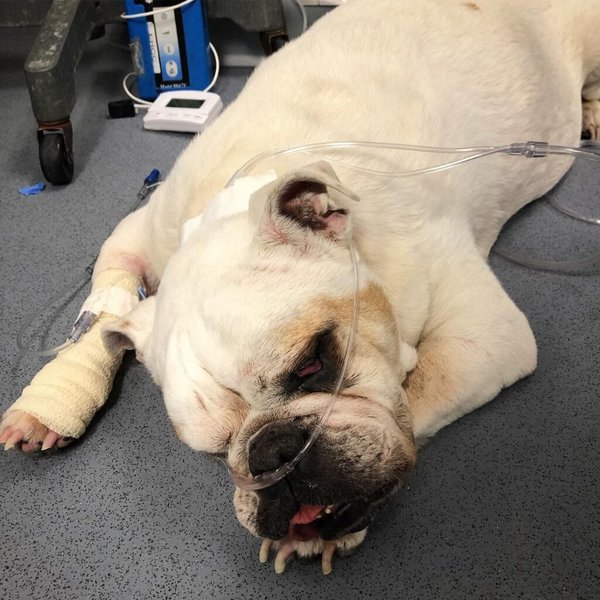
How To Take Care Of Bulldogs?
Dietary Needs
The Bulldog is a greedy eater that easily develops weight problems; Hence, to prevent that from happening, you need to monitor and be strict with your pooch’s food intake.
Bulldogs, like most other dogs, require a high-quality diet that is rich in meat protein, healthy fats, carbohydrates and devoid of fillers. And you can meet most Bulldogs’ nutritional needs by feeding them ½ to 2 cups of top-notch pure Kibble, divided into 2 meals daily.
If, however, you choose to place your Bulldog on a diet of wet dog food, you should ensure the product is of the highest possible quality. And one high-quality meal plan we recommend you place your Bulldog on is the Pet Plate diet for dogs.
The Pet Plate diet is formulated from healthy ingredients that are gotten from credible sources. And if your Bulldog is allergic to certain food substances, you can share this info with Pet Plate and get a specially prepared diet for your pooch.
You can also supplement your Bulldog’s meals with multivitamins to help the pooch with support for its joints, but you should consult with your vet before doing this.
Water
Bulldogs are large-sized and typically drink much water; Therefore, you should make sure to always provide easy access to clean, fresh water for this pooch.
It can also be beneficial to invest in dental water additives to help maintain great oral hygiene and prevent the development of mouth infections and diseases in your Bulldog.
Exercise
Bulldogs are mostly indoor pooches that don’t require a great deal of exercise. But as mentioned earlier, this pooch is particularly predisposed to weight problems, and to prevent your Bulldog from becoming obese, you should create time for exercise on a daily basis.
Ideally, the Bulldog should get between 20 to 40 minutes of exercise per day. And this can be in the form of short, brisk walks around the neighborhood or relatively longer walks under cool weather conditions.
Bulldogs are also lazy players, and the average Bulldog will be ready to take a one-hour nap after just fifteen minutes of playing. Also, because Bulldogs are prone to developing respiratory issues, it is important that you don’t over-exert this dog. And if you’re to take this pooch for a walk, you should do so when the weather condition is tolerable.
Are Bulldogs Intelligent? Temperaments Of Bulldogs
Contrary to its somewhat intimidating appearance, a Bulldog is a very gentle pooch that thrives well in a family setting. The Bulldog is known to be very affectionate towards its family members, and this pooch’s loyalty towards the said family members is unmatched.
The Bulldog is a low energy pooch and is well suited to living in both small apartments and large homes. However, the Bulldog is a loud breather that tends to snore and wheeze a lot.
When left with their favorite toys and enough food, most adult Bulldogs can cope with being left alone for extended periods (between 8 to 10 hours). But a puppy Bulldog constantly requires human attention around, else the pooch may develop separation anxiety.
Bulldogs may indeed be courageous and resolute, but this isn’t a pooch that will go about picking fights without a reason. And this is because Bulldogs are easy-going pooches that typically get along well with both friends and strangers.
Interaction With Children And Other Pets
The Bulldog’s amiable personality and laid back nature makes it well suited for homes with children. Bulldogs are also usually friendly towards other domestic pets, although they tend to display aggression towards other dogs.
Security
Bulldogs are naturally alert and observant; hence, they make for good watchdogs. And if it comes down to it, you can be reassured that a Bulldog will fight to the death to protect its home and family.
Bulldogs typically don’t bark much, but you can rely on this dog’s intimidating appearance scaring off intruders.
Training
Bulldogs are naturally lazy and laid back; hence, it will require a great deal of patience and determination to train this pooch. And while the Bulldog doesn’t rank high in intelligence, you can, with the aid of positive reinforcement, train this pooch to use a potty, solve tasks and learn new tricks.
The Bulldog also has a short attention span, and it can help to keep training sessions brief and straight to the point.
However, you can take solace in the fact that once you successfully train the Bulldog, you have an obedient dog that will never forget its training.
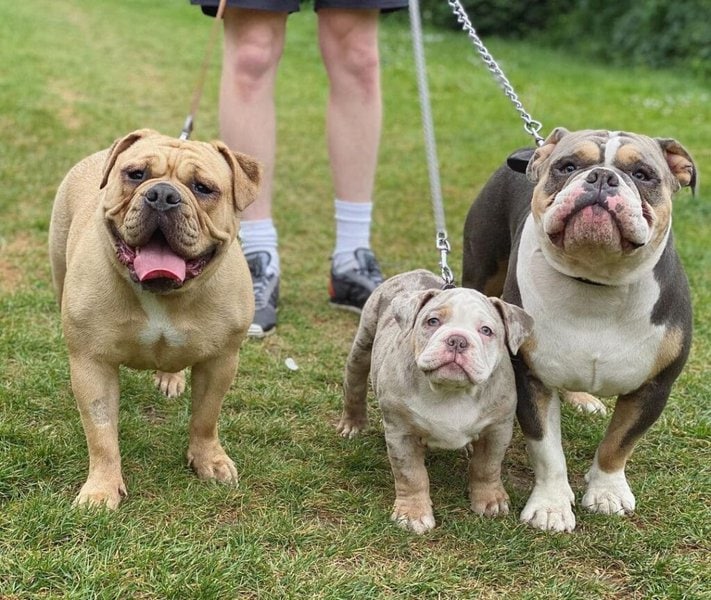
Related Questions
Why You Shouldn’t Buy A Bulldog? One of the major factors mitigating against ownership of Bulldogs is the myriad of health problems that this breed is predisposed to. Additionally, the Bulldog’s wrinkles make it prone to developing skin problems, and you shouldn’t buy a Bulldog if you can’t put in the required work to groom this pooch’s face.
Is A Male Or Female English Bulldog Better? Male and Female Bulldogs differ slightly in temperament and size, but there is no universally accepted answer to which of them is better for a family. However, regardless of which gender you end up buying, the Bulldog is a wonderful pet that is guaranteed to leave you with a lot of awesome memories.
What’s The Difference Between English Bulldog And American Bulldog? The major difference between English Bulldogs and American Bulldogs lies in their sizes. English Bulldogs are popular for their short, stocky build, while their American counterparts are renowned for larger, more athletic builds. Additionally, most English Bulldogs are typically reserved, while American Bulldogs won’t be content with laying on a couch all day.

